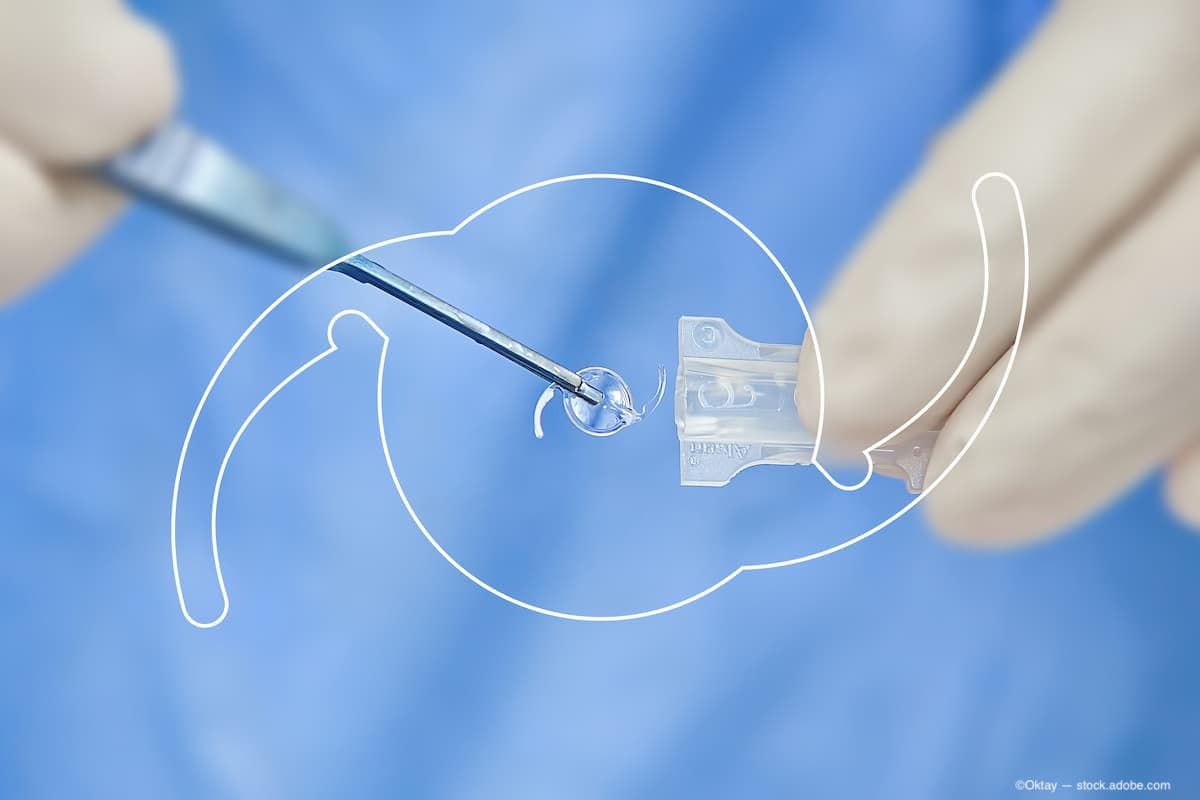Article
Treating all lenses equally
Intraocular lenses have come a long way in the 66 years since Harold Ridley first inserted one, said Alan Carlson, MD, professor of ophthalmology, Duke University, Durham, NC.
Durham, NC-IOLs have come a long way in the 66 years since Harold Ridley first inserted one, said Alan Carlson, MD, professor of ophthalmology, Duke University, Durham, NC. Between Dr. Ridley’s foresight and David Apple’s visionary approaches, Dr. Carlson said they laid the foundation for today’s lenses, including the toric lens.
Related: Customized IOL calculator helps cataract surgeons navigate lens choices
“With respect to the toric IOL, one of the key aspects is rotational stability,” he said. “These lenses are offered now in both the loop design lens as well as the plate design lens.” The robust preoperative diagnostics patients undergo, coupled with the intraoperative measurements and postop follow-up, has made these once difficult surgeries considerably easier, he said.
Coupling the rotational stability with multiple IOL calculators that are available translates to the overwhelming majority of surgeries performed without any complications.
Related: How new ‘evolving’ IOL formula maximizes lens accuracy
“Even with all of these options out there, things can still go wrong,” Dr. Carlson said, adding that Warren Hill, MD, “has given us his top four preoperative measurement errors,” starting with incorrectly marking a reference point in the cornea.
“When we take these measurements in the upright position and move the patient into the supine position, there is an utricle mediated cyclotorsional rotation that is quite unpredictable, both in direction and magnitude,” he said. “Third, there is the incorrect placement of the IOL, and finally, the failure to take into account the impact of surgically-induced astigmatism.”
Douglas Koch, MD, also gave surgeons another component to consider-the posterior cornea.
The Baylor University toric nomogram that Dr. Koch’s group developed “allows us to prevent this against-the-rule error that I was noticing early on in my patients before taking this into account,” Dr. Carlson said.
Recent: Rocket 2 meets safety endpoints for netarsudil
The latest addition to help surgeons prevent or overcome potential errors is the “www.astigmatismfix.com” site developed by John Berdahl, MD, and David Hardten, MD.
“That helps tell you where the optimal position ought to be with your toric lens. I found this to be a very useful website,” Dr. Carlson said.
Not always the right choice
Not always the right choice
There will also be patients who have astigmatism, but in whom a toric IOL is not the right choice, Dr. Carlson said.
“These are the patients who have insufficient astigmatism, or the patient decides against a toric. The latter is almost always for economic reasons,” Dr. Carlson said. “I've seen a drop of about 50% in the use of toric IOLs because of my work with the femtosecond laser. There’s a desire to fix the problem where it is. If you've got a flat tire, you don't want to fix it by letting the air out of the other tires. If I've got corneal astigmatism, I just instinctively like to fix it where it is.”
Recent: How IOL platform designs are achieving quality of vision
Cases of irregular astigmatism-especially those caused by keratoconus-may be progressive.
“You could create a very complex optical system by using a toric lens,” he said, and inadvertently remove the ability to treat with a rigid contact lens later.
Other conditions where Dr. Carlson advises against implanting a toric lens include basement membrane dystrophy, an unusually dry eye, or eyes with Salzmann nodules.
Recent: Ethics involved in using anti-VEGFs for pediatric patients
While some surgeons may opt to implant monofocal lenses and optimize the cornea later, Dr. Carlson “likes to fix that corneal issue first and then come back and re-assess.”
While pseudoexfoliation “is not an absolute contraindication, it should be a relative contraindication in patients you think might develop an instability of that capsular support over time.”
Time and place for everything
Time and place for everything
By no means should surgeons entertain the idea that monofocal lenses are now obsolete, Dr. Carlson said. There are several on the market that have great predictability and centration.
Monofocal lenses match “many patients’ expectations,” he said. “Patients may have a very successful history of monovision. You don’t need to talk them into some upgrade if they’re very happy with that.”
Some patients will come fully prepared to initiate the discussion about their lens choices, but have pre-determined they want “what insurance will pay for,” Dr. Carlson said.
In some disease states-macular degeneration, advanced glaucoma, diabetic retinopathy, even severe dry eye, or conditions like poor lens support or previous trauma-monofocal lenses should be preferred over multifocal, he said.
“Let's just face it, these lenses work, and they've just gotten a lot better over the last 66 years,” he said.
In his practice, the use of toric lenses now comprises only 15% as he’s increased the use of the femtosecond laser, with “80% of my patients opting for that when appropriate,” he said. “Still, a full 50% of my patients are getting a straight monofocal, non-toric IOL.”
Editorial: Why pediatric ophthalmologists don't go to late night parties
He also recommended not asking patients about their comfort level with spectacles, but “ask them to tell you what they would consider to be the ideal result with their eye surgery. That way they begin the conversation and it’s one of the reasons I have such a high conversion rate to the femtosecond laser and premium IOLs.”
Dr. Carlson does not have any financial disclosures. He may be reached at: (919) 681-3937.
This article is taken from Dr. Carlson's lecture at the 2015 American Academy of Ophthalmology meeting.
Newsletter
Don’t miss out—get Ophthalmology Times updates on the latest clinical advancements and expert interviews, straight to your inbox.





